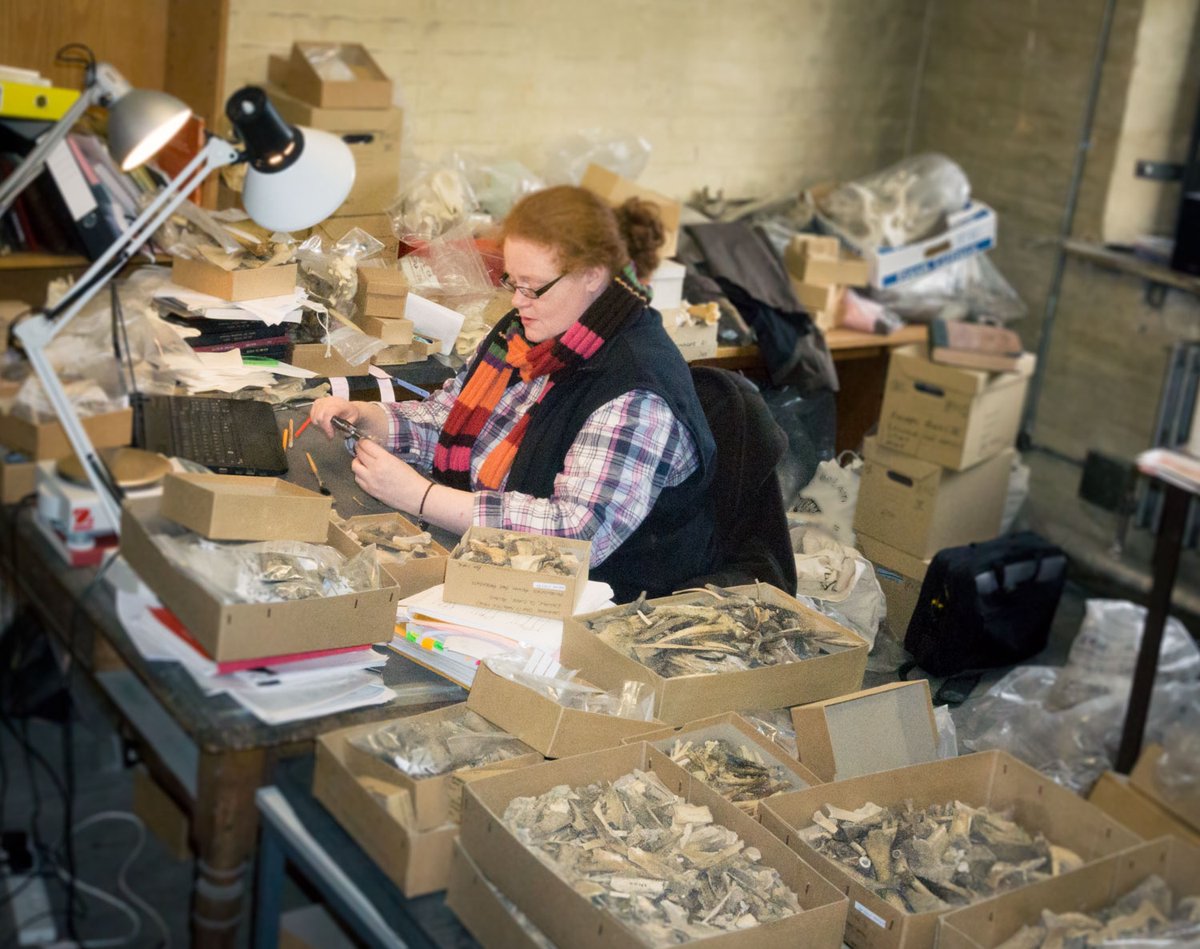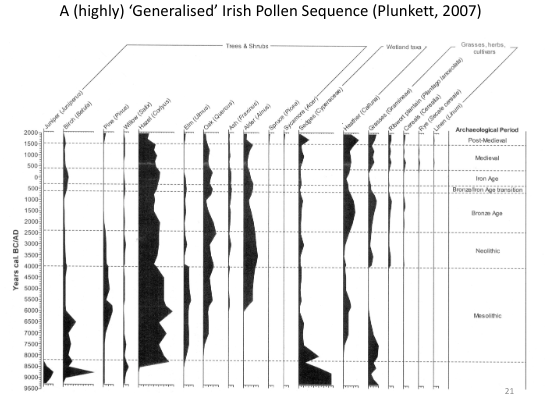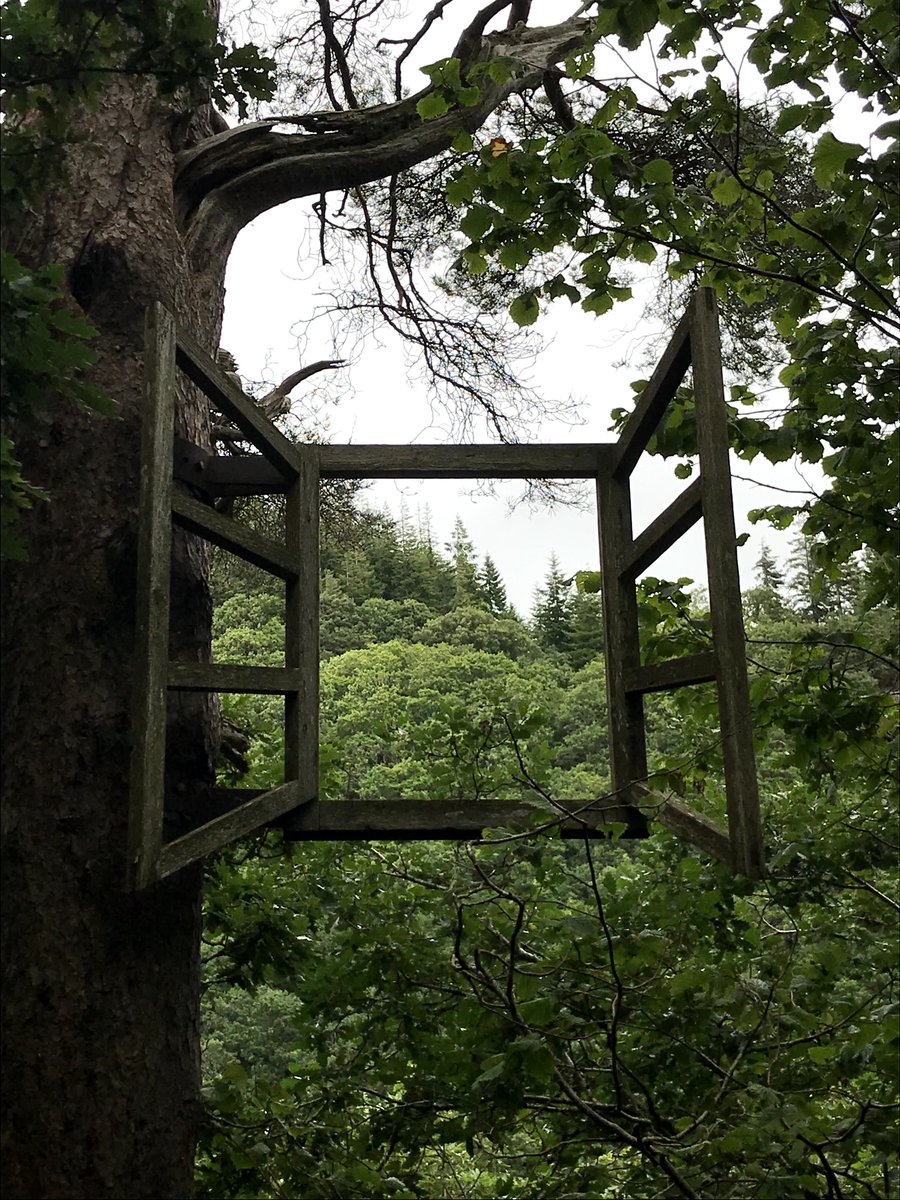Day1: Intro 🧵
Thanks to @IrelandsEnviro for inviting me on to chat to ye all about our research & work on #IrishCaveBones, cave research, past ecosystems & humans/animals in Ireland during past c.50,000 years! so we start-some background first, why we started and who we are. 1/n
Thanks to @IrelandsEnviro for inviting me on to chat to ye all about our research & work on #IrishCaveBones, cave research, past ecosystems & humans/animals in Ireland during past c.50,000 years! so we start-some background first, why we started and who we are. 1/n
2/n Back in 2006/7, I was researching the origins of red deer in Ireland, along with some others. I approached @NMIreland Natural History Division to access animal bones that had been excavated from Irish caves in late 1800s to mid 1900s, seeking red deer bones if present.
3/n I did indeed find ancient red deer bones and antler (as we wanted to compare ancient DNA with modern Irish populations to determine if any were descended from ancient populations), but also found bones that were listed as red deer, but were not - pig, sheep, horse!
4/n There were a lot of ID errors....As for the red deer, these are some from caves (photo), we used in our study. Killarney red deer are descended from 5,000 year old Neolithic introduction from Britain by humans then. Back to caves bones .... 

5/n There were so many ID errors I noticed from glancing through boxes across many caves (some 10 caves), I asked for permission from then Keeper, Nigel Monaghan, to reassess these #IrishCaveBones and use up to date zooarchaeological recording methods for each bone fragment.
6/n I was given access and so a personal massive project began for me, that I started alone, but through time others have joined me to collaborate on various aspects. I record each bone fragment, type of bone, species or taxa grouping ID, record bone measurements, weight and
7/n colour of the bone and so on, recording anything I see as atypical from each bone fragment... there's an estimated 60,000+ bone fragments from these excavated antiquirian caves in the Museum's stores. I didn't have funding at the time, and so I set to work on my holidays. 

8/n Then in 2009/10, I worked with @ucdarchaeology Assoc. Prof. Helen Lewis and we applied to the Heritage Council to take one set of caves (5 in total) from Co. Clare, that were all mixed up together, separate and start a accurate catalogue of the fragments. We were successful &
9/n we got funding to give me 3 months of time to work full time on the 5 caves. I examined &recorded some 12,000 animal bone fragments. There were original excavation notebooks & so I could compare what the 'real' ID was against what they thought it was. c.35% of IDs were wrong!
10/n This is a high inaccuracy and after the 3 months of funded work, Helen and I decided to seek more funding to continue on this work. After all, the why we want to know what animal species we had in these caves, stem from our current zoological and naturalists knowledge of
11/n Irish species and what was here some 10,000 years or 20,000 years or more ago. Our 'native' lists of animals depend on these identifications and other research (more on this later this week). We have to know what was here, when, for animal protection & conservation today.
12/n Unfortunately, we were not successful in getting any more funding from 2010, over the years between my other work, I would get in when I had some spare time back to the Museum stores and reassess another batch of cave bones. Fragment by fragment, I continued until ... 

13/n ...an amazing discovery one Friday early evening on a batch of bones I was working on still from the caves in Co.Clare (Edenvale cave complex). A certain bear bone was going to give up its secrets ... I'll go into this later this week in more detail, so stay tuned! #teaser
14/n this discovery was a turning point, people got more interested. In 2015/16, I had completed the full reassessment and catalogue of the bones from Ballynamintra cave, Co. Waterford & started to work with Dr Richard Jennings @RCEAP_LJMU.
15/n Also in 2015, I started a new collaboration with the late Prof. Peter Woodman (University College Cork), on Killuragh cave, Co. Limerick, which he excavated in the 1990s. There were 10,615 bones in this cave, including many of these Arctic lemming and wood mouse teeth! 

16/n Killuragh cave had radiocarbon dated human bones from the Mesolothic to Bronze Age periods (covering c.9,500 to c.3,000 years ago). This cave also had older post Ice Age animals such as giant deer, reindeer, Arctic lemming and others (see list below), birds, fish, amphibians 

17/n Killuragh cave, also had horse bones and teeth and these gave us a radiocarbon date during the Middle Bronze Age period - the earliest #horse remains found in Ireland post Ice Age (we did have wild horse before the Ice Age).
18/n, sorry I digress with excitement of bones in caves! (this might occur regularly)... back to the origins story of our research projects - so over time, I chatted to more like minded people and the #IrishCaveBones were getting more attention as people saw how important they
19/n ...are and what knowledge can we gain from a pile of old cave bones? We can gain so much from using different type of techniques to extract pieces of their stories, their whispers, into a melting pot and through interpretation of threads of results, we gain an understanding
20/n of when these animals lived in Ireland (radiocarbon dating), what they ate and where did they come from (stable isotopes), how big were the animals (bone measurements), were they same groups of same species found in Europe (ancient DNA) and did they migrate to Ireland.
21/n From a pile of these ⬇️ we get a look into how an animal and it's species lived in the past in Ireland - before and after the last Ice Age. Did they interact with humans or other animals? Were they healthy or sick? How did our Irish ancient ecosystems work? And much more 

22/n So from my initial work started some 16years, a research team has developed and come together over the recent 5 years or so, to form a collaborative co-op so to speak, of different researchers from Ireland, UK and Canada to seek out understanding of Ireland's ancient
23/n animals, ancient ecosystems and how did they work (good or bad due to different reasons), climatic influences, ice age glacier modelling, human-animal relationships through time. We have funding from various sources: Dr Richard Jennings (Liverpool John Moores University)
24/n is lead excavations director and researcher, with Helen and I as co-principal investigators, funding from @RIAdawson (Ballynamintra cave, Castlepook cave, Kilcolman cave). We have funding from @IrishResearch COALESCE INSTAR+ 2022-24 to reassess Museums (Ireland and
Northern Ireland) collections of caves' bones, and produce full catalogues &take samples for stable isotopes, ancient DNA & radiocarbon dating (with 14CHRONO @14_chrono at Queen's University Belfast) - so we may learn more of where species occur through time, diet & relationships
26/n We have @DrHaydo doing our isotopes in Canada, with his team (we have important news there to share shortly). Both the Francis Crick Insititute (UK) and Prof. Dan Bradley's lab in @TrinityCollege are doing our ancient DNA.
27/n I (@RuthFCarden) am reassessing all bone fragments from many cave collections of bones in the Museums (all island), recording measurements & analysising these data with the other results. Full catalogues will be produced & published in due time. Exciting stuff on the way!
28/n We also collaborate with Dr Mike Simms (National Museums Northern Ireland) who's expertise lies in how limestone caves form in Ireland and how they 'work'. I'll expand on this on Day 3.
29/n The team have covered all the major bases, with different tools being used, to gather data and analyse collectively to form Ireland's past ecosystems filled with diverse range of species through time. We are time travellers using a pile of old bones! 

30/30 That's the short intro (😅) of how the #IrishCaveBones project came to be, how it started and for now who we are. During the week, I'll cover some aspects in more detail from our research. Hope you can engage & listen to the whispered secrets of some old cave bones...
• • •
Missing some Tweet in this thread? You can try to
force a refresh

 Read on Twitter
Read on Twitter



















